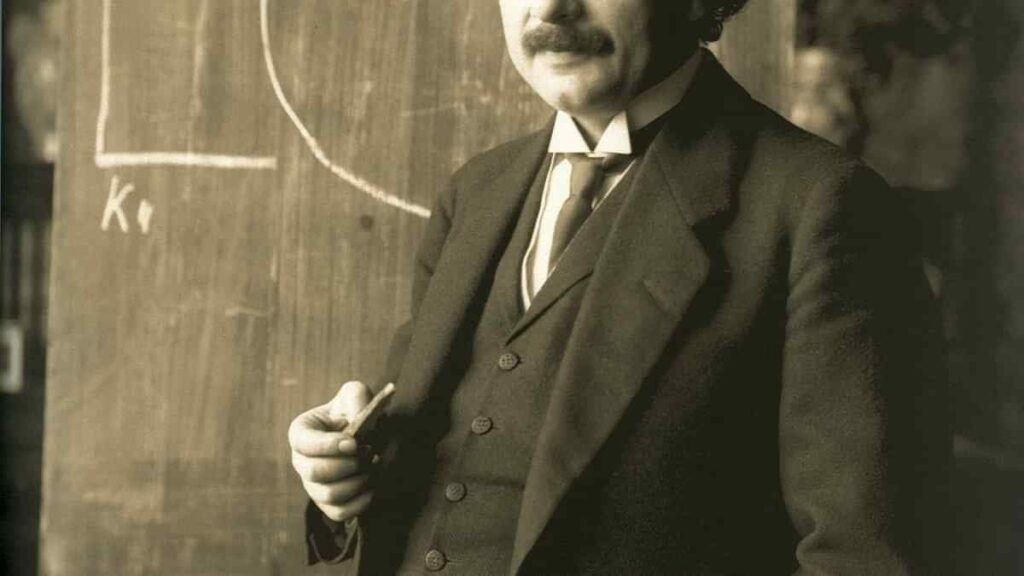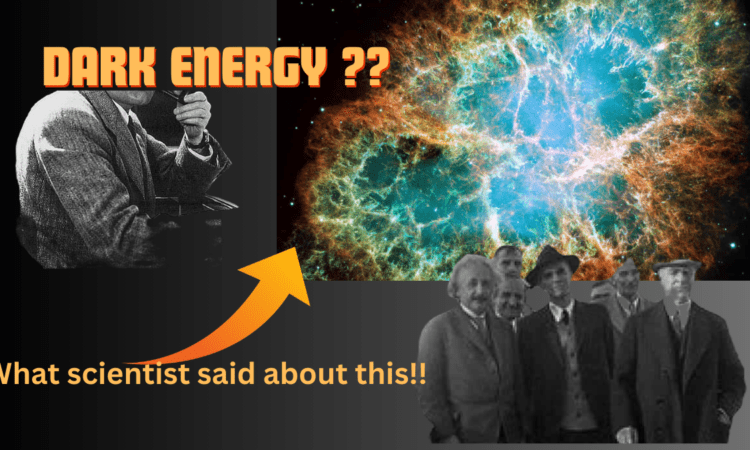Table of Contents
Detailed theory about Dark Energy-
The secret is dark energy-Dark energy theories are explained below:
Thank you for reading this post, don't forget to subscribe!Einstein’s Cosmological Constant about Dark Energy: From Triumph to Regret in the Unraveling Universe
A few days ago, he discovered a new theory and created a stir in the entire scientific world. He was a star scientist in everyone’s eyes. He stuck to this theory like a leech for almost a decade. Night and day together, many logs were burned and in 1916 it reached its final field equation.
That theory is now called one of the foundations of modern physics. One of the examples of the intellectual excellence of mankind. Its name is General Relativity. You know who I’m talking about. He is Albert Einstein.
In the heat of fame, Einstein went to solve the equation that he had formulated around 1917.
The German physicist got upset by it. Because, from the time of Newton until then, it was believed that the universe is static. But one! His equation says the opposite! This means that a dynamic universe is obtained from the solution of the equations of general relativity. But why would it be like this? Einstein could not believe his equation.
This can only mean that there is a mistake in the equation, thought Einstein
. So he thought of correcting it. To do that, he inserted a new constant into it. It works against gravity. Means antigravity. In Bengali, it can be said, antigravity force. The constant is expressed by the Greek letter lambda. He also gave the name Besh Galvari—Cosmological Constant or Cosmological Constant. That’s it! It resulted in a desired stable universe. Einstein regained peace of mind. But he didn’t know that he would soon regret this mess. Little did he know, other scientists would compare it to the ugly duckling.
From Mistake to Mystery, the Resurgence of the Cosmological Constant–
Almost a decade later, the American astronomer Edwin Hubble just collapsed Einstein’s stable universe. He was then working at the Mount Wilson Observatory in California, USA. He published a paper by observing numerous galaxies in the night sky. It is clearly understood that every galaxy in the universe is gradually moving away from one another. Simply put, the universe is expanding. That is, it cannot be fixed in any way, but dynamic. The swelling is gradually increasing in size.
Therefore, Einstein was forced to admit his mistake in public when his wife came to visit Mount Wilson Observatory in the United States in 1931. Said the cosmic constant was the biggest mistake of his life.

Image credit: Google
After that, the cosmological constant has its place in the history of science. In the cancellation list. Astakunda of history! Einstein was sad but other scientists were happy. Who else likes shrivelled ducklings? So the next sentence should have been — ‘Then, they lived happily ever after!’
But no, that happiness did not last long on their foreheads. Because after a long 67 years, this constant got a revival. That coming back is also not a common thing, it can be said to come back to Mahasamaroh. It also rides on the shoulders of a new mystery. The scientists ran day and night after that mystery but could not find any bottom. Even now it is shrouded in mystery. For scientists, it’s like a nightmare. But what is the secret? Why is it a nightmare for scientists?
“Cosmic Rivalry: The 1998 Breakthrough and the Quest to Unravel the Universe’s Fate”
The year 1998 Two groups of scientists from the University of California, Berkeley, USA thought of doing something new. In the beginning, no one informed anyone. But later it was found that both the groups chose the same research topic. Some of them are physicists. It was led by Sol Perlmutter. The team is known as the Supernova Cosmology Project. Another group of astronomers. Adam Rees and Brian Paul Schmidt led it. They are known as the Hi-Z Supernova Search Team, abbreviated as the Hi-Z Team. In the beginning, they started working independently but soon one group became a rival of another group. A fierce competition started between the two teams. A fascinating thing started in the world of science.
At that time there was no doubt in anyone’s mind about the expansion of the universe. The direct and indirect evidence related to this is rolling in the hands of scientists. A new question arose in the minds of scientists. That is: what is the end of the universe? Will the universe continue to expand like this forever, or will it begin to reverse at some point? Means will begin to shrink.

Calculations showed that if the universe has enough energy density, then its expansion will eventually stop. Then the universe will begin to go silent. Or if the energy density is low, its expansion will never stop. However, gravity can reduce this expansion over time. Because gravity will try to pull everything together. But what will happen?—To answer that, scientists must know how fast the universe is expanding.
One way to find out is to calculate how fast galaxies are moving away from us. The way to do that is to measure the Doppler effect of galaxies. This is how the police measure the speed of the car on the road. It is measured by measuring the deviation of sound. But light also has the Doppler effect. In the same way the faster a galaxy moves, the more redshift its light will have. This means that all colours of light in the spectrum will shift towards the red end. The redder the light from the galaxy will be.
But how do we know that an object or galaxy in the universe is far away from us? Let’s say an object in space may be very close to us, but its light is dim. On the other hand, if a distant object is bright enough, it will appear similar to a nearby faint object. That is, we will think that the distance between two objects is the same. So what is the solution?
Unveiling the Cosmic Tapestry: From Cepheid Stars to Supernovae, the Emotional Journey of Astronomical Illumination-
American astronomer Henrietta Levitt rescued astronomers from this confusion. He used a very clever method for that. A Cepheid variable star or a Shefali anomaly can provide a solution. Scientists know the normal luminosity of a Cepheid star. The brightness of such stars is always the same. So when a Cepheid star is found in a galaxy, it is compared to the brightness of another star or another Cepheid star.
As the distance increases, its brightness decreases. Or the more faint it will appear to us. The relationship between the two is quadratic. The farther away an object is, the dimmer it will be as the square of the distance. For example, if one of two Cepheids is 9 times fainter than the other, then the comparatively fainter is three times as far away as the other. That is why the Cepheid star is called the standard candle of space. Hubble has been used to measure how far away the galaxies in the universe are from us.
This was once the standard method for measuring the distance of an object in space. But in the far, far reaches of the universe, the stars appear very dim. It became difficult for scientists to use this star as an ideal lamp at such a great distance. So the invention of new ideal lamps was the need of the hour. The fun of science is that if you stick to a problem, the scientist will eventually find a solution. The new ideal lamp is no exception.
Scientists soon discovered that supernovae could be ideal beacons for the universe’s most distant objects.
Conclusion:
Those theories and practical never ends still scientists are unwrapping the dark energy, and a lot more stuff is showing up that will be discussed later
- FASTag KYC update: Updation of KYC for FASTag before 31st January; Step-by-step Process:
- Tejas vs. Thunder: China’s “Wrestles,” JF-17 With a fighter deal with Nigeria, India’s LCA Tejas is fully engaged in backchannel diplomacy.
- Real Madrid Victory: At Las Palmas, Aurelian Tchouameni gives Real Madrid a late victory.
- Bharat Ratna: Must-know Facts and Important FAQs on the Bharat Ratna Award
- Klopp is leaving Liverpool at the end of the season
